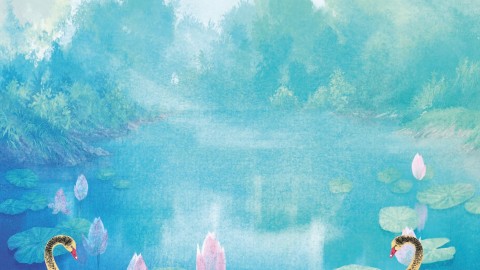Knowledge, Information and Experience
Early to bed and early to rise makes a man healthy, wealthy and wise.
Ancient History:
Early beds were little more than piles of straw or some other natural material (e.g. a heap of palm leaves, animal skins, or dried bracken). An important change was raising them off the ground, to avoid drafts, dirt, and pests. 23-5 million years ago, before the advent of humans, apes began creating beds composed of a sleeping platform including a wooden pillow.
Post-Classical History:
The ancient Germans lay on the floor on beds of leaves covered with skins, or in a kind of shallow chest filled with leaves and moss. In the early Middle Ages they laid carpets on the floor or on a bench against the wall, placed upon them mattresses stuffed with feathers, wool, or hair, and used skins as a covering. Curtains were hung from the ceiling or from an iron arm projecting from the wall.[9] They appear to have generally lain naked in bed, wrapping themselves in large linen sheets which were stretched over the cushions.
In the 12th century, luxury increased and bedsteads were made of wood much decorated with inlaid, carved, and painted ornamentation. They also used folding beds, which served as couches by day and had cushions covered with silk laid upon leather.
In the 14th century the woodwork became of less importance, generally being entirely covered by hangings of rich materials. Silk, velvet, and even cloth of gold were frequently used. Inventories from the beginning of the 14th century give details of these hangings lined with fur and richly embroidered.
In the 15th century beds became very large, reaching 7 to 8 feet (2.1 to 2.4 m) by 6 to 7 feet (1.8 to 2.1 m). The mattresses were often filled with pea-shucks, straw, or feathers.
Modern History:
In the 17th century, which has been called “the century of magnificent beds”, the style a la duchesse, with tester and curtains only at the head, replaced the more enclosed beds in France, though they lasted much longer in England.
In the 18th century feather pillows were first used as coverings in Germany, which in the fashions of the bed and the curious etiquette connected with the bedchamber followed France for the most part.
Iron beds appear in the 18th century; the advertisements declare them as free from the insects which sometimes infested wooden bedsteads.
Bed Sizes:
Bed sizes vary considerably around the world, with most countries having their own standards and terminology. While the “double” size appears to be standard among English speaking countries, based on the imperial measurement of 4 ft 6 in by 6 ft 3 in (137 cm x 190 cm), the sizes for other bed types tend to vary. Mainland European sizes differ, not merely because of the use of the metric system.
Notable Examples:
One of the largest beds in the world is the Great Bed of Ware, made in about 1580. It is 3.26 metres (10.7 ft) wide, 3.38 metres (11.1 ft) long. The bed is mentioned by Shakespeare in Twelfth Night. It is now in the Victoria and Albert Museum (V&A) in London.
In 1882, an Indian Maharajah had a bed made of solid silver. At each corner of the bed there was a life-sized statue of a naked woman holding a fan. When the Maharajah lay on the bed, his weight started a mechanism that made the women wave their fans.











